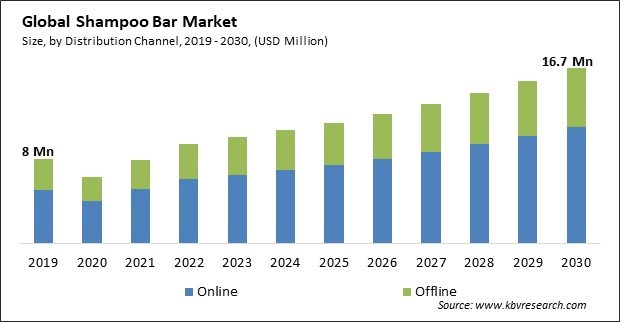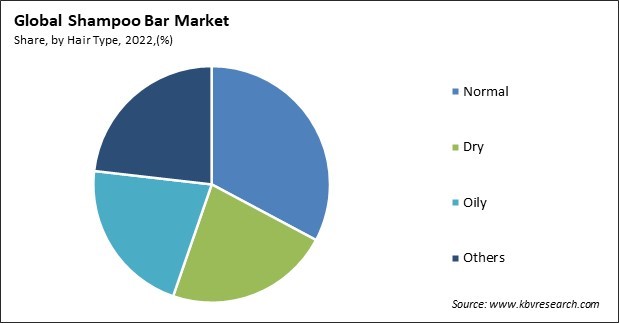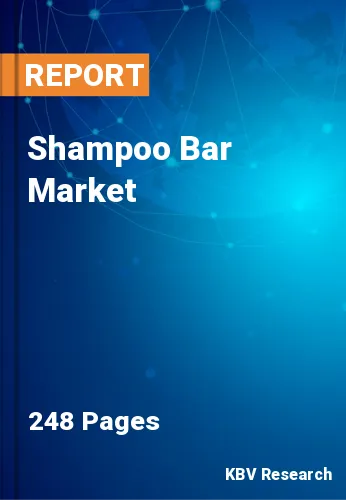The Global Shampoo Bar Market size is expected to reach $16.7 million by 2030, rising at a market growth of 7.5% CAGR during the forecast period. In the year 2022, the market attained a volume of 1,012.3 million Units experiencing a growth of 7.3% (2019-2022).
Consumers in the Asia-Pacific region seek sustainable alternatives as environmental awareness and concerns about plastic waste increase. Therefore, Asia Pacific segment generated $1,692.6 Thousand revenue in the market in 2022. Solid personal care products, including traditional soap bars, have a long history in many Asian cultures. The growing middle-class population in several Asia Pacific countries contributes to increased purchasing power. Some of the factors impacting the market are growing awareness of water conservation, increasing adoption of the travel and hospitality industry and lack of standardization in shampoo bar.

Shampoo bars contribute to water conservation efforts because their concentrated formulations often require less water for rinsing than liquid shampoos. As consumers become more aware of their water footprint, the water-saving aspect of shampoo bars aligns with their environmental values, driving adoption. The application and rinsing process of shampoo bars is designed to be more efficient, requiring less water than liquid shampoos. The concentrated nature of the bars ensures that they lather up easily and are rinsed out with minimal water. This efficiency appeals to consumers who are conscious of their water consumption and are seeking ways to reduce their environmental impact. Additionally, the adoption of shampoo bars enhances the overall guest experience. Travelers appreciate the thoughtfulness of accommodations that provide sustainable and quality amenities. Shampoo bars contribute to a positive and memorable visitor experience with their distinctive formulas and eco-friendly appeal, which may enhance consumer satisfaction and loyalty. With its large consumer reach, the hospitality industry has the potential to influence guest behavior. By introducing guests to the use of shampoo bars during their stay, the industry contributes to creating awareness and fostering positive attitudes toward these sustainable products. Guests can be inspired to continue using shampoo bars in their personal care routines beyond their hotel stay. As a result of the growing awareness of water conservation, the market is anticipated to increase significantly and increasing adoption of the travel and hospitality industry has been a pivotal factor in driving the growth of the market.
However, Inconsistent standards can lead to safety concerns, especially regarding the use of certain ingredients or the manufacturing processes of shampoo bars. Lack of clear guidelines may make it difficult for consumers to assess the safety of a product, potentially leading to apprehensions about using shampoo bars. Consumers often rely on standardized information to compare products and make informed choices. The absence of standardized labeling and terminology makes it challenging for consumers to compare different shampoo bars effectively. This lack of clarity may result in decision paralysis and slow the adoption of the market.
By hair type, the market is categorized into normal, dry, oily, and others. In 2022, the normal segment held the highest revenue share in the market. Shampoo bars are convenient for regular use, making them suitable for individuals with normal hair who prefer a simple and efficient hair care routine. Shampoo bars' ease of use and practicality align with consumers' preferences in seeking uncomplicated and effective hair care solutions. Individuals with normal hair may be more open to trying new hair care products, making them an ideal segment for introducing shampoo bars. With a lower likelihood of specific hair concerns, this segment may be more willing to experiment with sustainable alternatives, contributing to the overall growth of the market segment.

Based on distribution channel, the market is classified into online and offline. The offline segment acquired a substantial revenue share in the market in 2022. The offline segment provides immediate purchase gratification. Consumers can buy shampoo bars on the spot without waiting for shipping. This immediacy can be appealing, especially for individuals who prefer to take products home immediately and use them in their daily routines. Physical stores allow for the distribution of samples and testers. Consumers can try different shampoo bar formulations before making a purchase, helping them find the product that best suits their hair type and preferences. Sampling contributes to a positive buying experience and can lead to increased adoption.
| Report Attribute | Details |
|---|---|
| Market size value in 2022 | USD 9.5 Million |
| Market size forecast in 2030 | USD 16.7 Million |
| Base Year | 2022 |
| Historical Period | 2019 to 2021 |
| Forecast Period | 2023 to 2030 |
| Revenue Growth Rate | CAGR of 7.5% from 2023 to 2030 |
| Number of Pages | 248 |
| Number of Tables | 510 |
| Quantitative Data | Volume in Million Units, Revenue in USD Thousands, and CAGR from 2019 to 2030 |
| Report coverage | Market Trends, Revenue Estimation and Forecast, Segmentation Analysis, Regional and Country Breakdown, Porter’s 5 Forces Analysis, Company Profiling, Companies Strategic Developments, SWOT Analysis, Winning Imperatives |
| Segments covered | Hair Type, Distribution Channel, Region |
| Country scope |
|
| Companies Included | Lush Retail Ltd., L'Oréal S.A., The Procter and Gamble Company, Ethique Limited, Shiseido Company Limited, L'OCCITANE Group, grüum Europe Ltd. (grüum), HiBAR, Inc., Davines S.p.A., and J.R. LIGGETT LTD |
| Growth Drivers |
|
| Restraints |
|
Region-wise, the market is analysed across North America, Europe, Asia Pacific, and LAMEA. In 2022, the North America region led the market by generating the highest revenue share. The zero-waste lifestyle movement, encouraging individuals to minimize waste production, has gained popularity in North America. Endorsements and promotions by celebrities and influencers have contributed to the popularity of shampoo bars in North America. E-commerce platforms allow consumers to explore a wide range of brands and formulations, read reviews, and make informed choices, contributing to the growing acceptance of shampoo bars in North America.
Free Valuable Insights: Global Shampoo Bar Market size to reach USD 16.7 Million by 2030
The market research report covers the analysis of key stake holders of the market. Key companies profiled in the report include Lush Retail Ltd., L'Oréal S.A., The Procter and Gamble Company, Ethique Limited, Shiseido Company Limited, L'OCCITANE Group, grüum Europe Ltd. (grüum), HiBAR, Inc., Davines S.p.A., and J.R. LIGGETT LTD.
By Distribution Channel (Volume, Million Units, USD Million, 2019-2030)
By Hair Type (Volume, Million Units, USD Million, 2019-2030)
By Geography (Volume, Million Units, USD Million, 2019-2030)
The Market size is projected to reach USD 16.7 million by 2030.
Growing awareness of water conservation are driving the Market in coming years, however, Lack of standardization in shampoo bar restraints the growth of the Market.
Lush Retail Ltd., L'Oréal S.A., The Procter and Gamble Company, Ethique Limited, Shiseido Company Limited, L'OCCITANE Group, grüum Europe Ltd. (grüum), HiBAR, Inc., Davines S.p.A., and J.R. LIGGETT LTD.
In the year 2022, the market attained a volume of 1,012.3 million Units experiencing a growth of 7.3% (2019-2022).
The Online segment is generating highest revenue in the Market, by Distribution Channel in 2022; thereby, achieving a market value of $11.1 million by 2030.
The North America region dominated the Market, by region in 2022, and would continue to be a dominant market till 2030; thereby, achieving a market value of $7.5 million by 2030.
Our team of dedicated experts can provide you with attractive expansion opportunities for your business.

